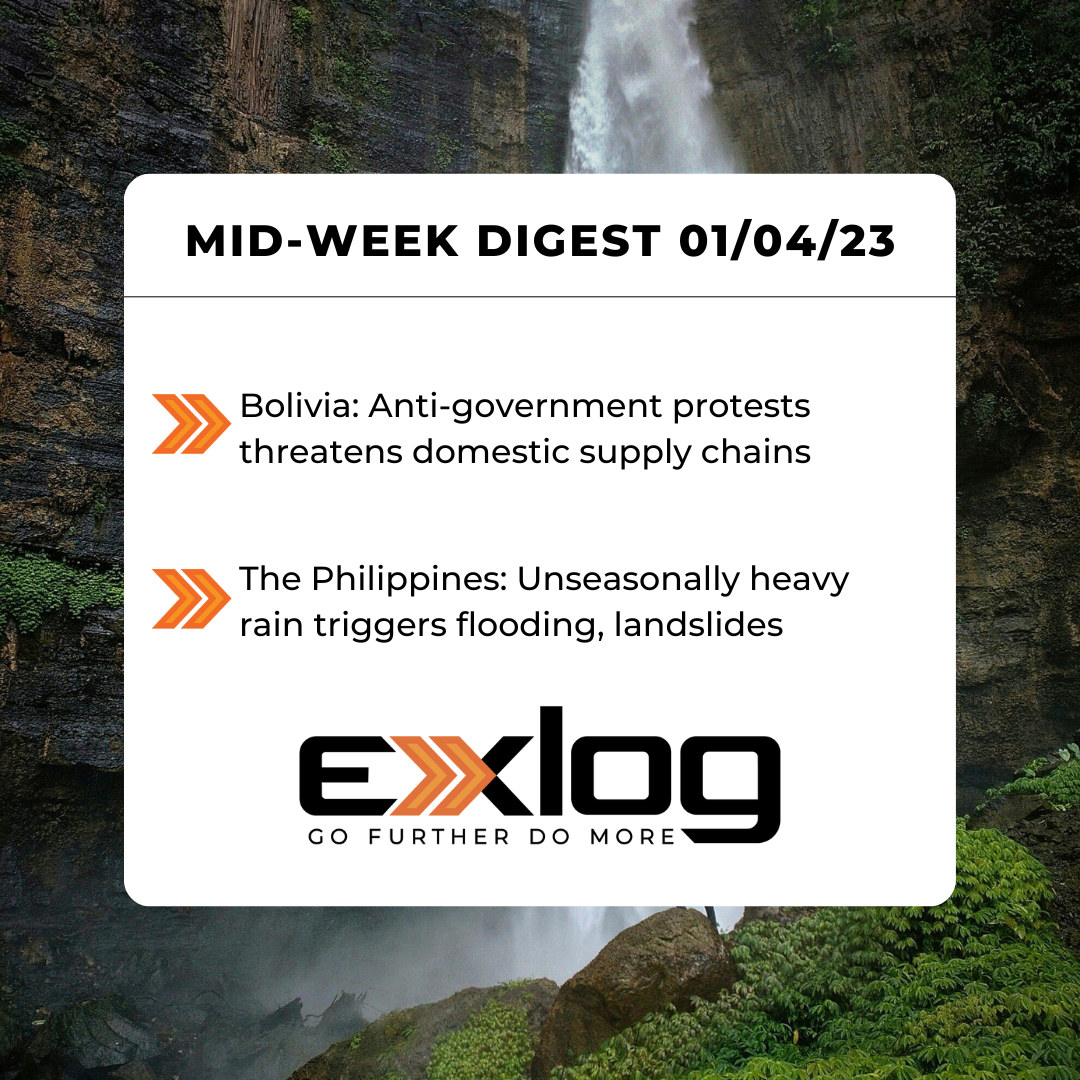Anti-government protests in Bolivia and widespread flooding in the Philippines
Bolivia: Anti-government unrest threatens domestic supply chains
Ongoing protests fueled by the arrest of the governor of Santa Cruz on Dec. 28 have resulted in significant travel and supply chain disruptions and led to clashes between demonstrators and security forces. Supporters of right-wing opposition leader Luis Fernando Camacho – arrested on terrorism charges for his role in the alleged 2019 coup – took to the streets shortly after his detention, erecting roadblocks in several areas of Santa Cruz, detonating fireworks, and setting fire to at least seven government buildings including the Prosecutor’s Office and Police Command. Protests have also materialized near the Christ the Redeemer monument, where security forces clashed with anti-government protesters and deployed tear gas in an attempt to disperse the crowd. As of Jan. 4, at least 90 people have been arrested for vandalism and destruction of government property, while 200 others sustained injuries. Most of the protests have been concentrated in Santa Cruz, but smaller marches have also occurred in La Paz, where pro-government protesters clashed with Camacho supporters on Jan. 3. The unrest has significantly impacted the transportation sector – operations at Viru Viru International Airport were briefly suspended on Dec. 28 after protesters stormed the runway in an attempt to halt Camacho’s transfer to a maximum-security prison in La Paz. Protesters have also blocked interprovincial highways out of Santa Cruz Province – the country’s livestock and agricultural center – disrupting the supply chain for grains and food to the rest of the country. The government sentenced Camacho to four months of preventative detention on Dec. 30, although prosecutors have filed an appeal to extend the detention to six months, indicating that pro-Camacho protests will likely persist in response to the sentence and could escalate if the court grants the appeal. Continued unrest will likely result in prolonged roadblocks, threatening food shortages and disrupting business operations across the country.
The Philippines: Unseasonally heavy rain triggers flooding, landslides
Further infrastructure and private property damage is expected in northern and central regions of the Philippines as heavy rains and subsequent flooding are forecast to continue battering the country through at least Jan. 5. Severe rainfall has triggered widespread flooding in 10 regions throughout the southern and central zones of the archipelago since Dec. 25, including MIMAROPA, Bicol, Western and Eastern Visayas, and parts of Mindanao; as of Jan. 4, the capital region of Manila remained largely unaffected, according to local reports. According to the National Disaster Risk Reduction and Management Council, the floods have killed 51 people and displaced more than 33,000 others; approximately 8,600 remain in shelters. Flooding and landslides have also destroyed more than 4,500 homes, 123 roads, and 12 bridges, and disrupted power and water supply to the affected areas. In addition to travel infrastructure, the flooding also damaged nearly 8,000 hectares of crops and affected approximately 9,700 farmers and fishermen. Early estimates indicate that the overall damage to agriculture has reached PHP 234 million (USD 4 million) and infrastructure damage has topped PHP 1.1 billion (USD 20 million) – with the region of Northern Mindanao experiencing the largest impact. The Philippine government has declared emergencies in at least 22 cities, enabling local authorities access to emergency funds to assist affected municipalities. Despite floodwaters subsiding, heavy rain is forecast for the central, northern, and eastern regions of the archipelago – including the provinces of Cagayan, Isabela, and Aurora – until at least Jan. 5. Continued rain accompanied by possible flooding and landslides threatens additional infrastructure damage and associated supply chain disruptions. While such severe storms are unusual during the dry season that typically lasts from December to February, meteorologists predict based on global climate patterns that similar off-season, high-impact weather events are likely to increase in frequency in the long term.


